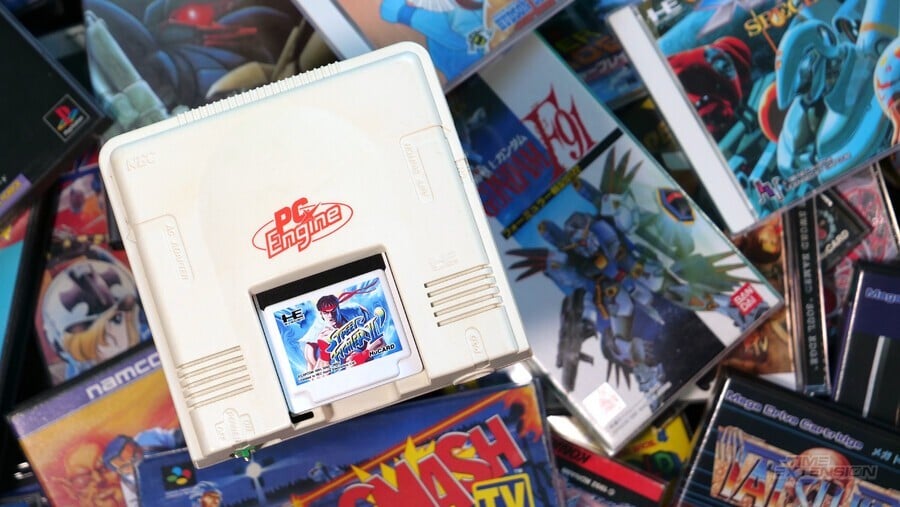
We're a day late, but when it's been 35 years, what's that between friends?
Yes, NEC's groundbreaking PC Engine is now 35 years old, having been launched in its native Japan on October 30th, 1987.
A collaboration between hardware giant NEC and software company Hudson, the PC Engine launched at a time when Nintendo's Famicom utterly dominated the world of gaming in Japan, but its cutting-edge architecture (which, lest we forget, was still technically 8-bit) offered a huge graphical step-up from Nintendo's console, and this allowed the PC Engine to gain a significant foothold in the country.
In fact, Sega's Mega Drive – released a year later in Japan and itself is now 34 years old – had to settle with third place in the Japanese pecking order throughout its lifespan, such was the popularity of NEC's console.
From its launch until the arrival of its ill-fated successor, the PC-FX, the PC Engine was subject to a dazzling number of hardware upgrades. The iconic white model was joined by the Core Grafx I and II, PC Engine Shuttle and SuperGrafx, with the latter being a pumped-up version intended to do battle with the Mega Drive – but, in reality, it flopped at retail, and only six games were ever produced for it.
However, NEC's venture into the world of CD-ROM gaming bore more fruit; the CD attachment for the PC Engine was the first piece of hardware of its kind and would be joined by the Duo – a PC Engine and CD unit combined. This would be joined by the Duo-R and Duo-RX, two additional iterations of the same base hardware.
The PC Engine would also launch in North America as the TurboGrafx-16, but it wasn't nearly as successful as its Japanese counterpart. In Europe, the PC Engine would remain an imported delicacy and triggered a surge of interest in 'grey imports' from Japan.
The rights to the system and much of its library now reside with Konami, which purchased Hudson Soft in 2011. Konami released a 'mini console' version of the machine worldwide in 2020.
